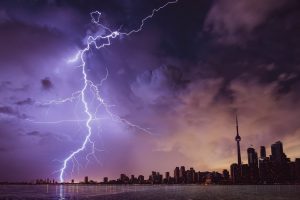Lightning protection systems for historic buildings
Direct Strike is a business that strives to produce reliable lightning protection systems. In an industry such as ours, you cannot afford any mistakes. Instead you need to offer a solution that ensures maximum security from the elements. This is exactly what we do.
There is a problem with historic buildings; most of them didn’t have lightning protection in mind initially. It is likely construction took place without even thinking about it. Therefore, the appearance of new conductors can seem intrusive. In many cases there are also limits on what you can do to these properties.
Protect the building’s character
Your protection system’s material of choice is essential in lowering its visual impact. In addition the positioning is vital. Both can make it more likely you will get permission to install the system.
Adhering to the British Standard shall create a potent lightning protection arrangement. However, you should position your conductors behind the buttress. This will be out of sight. The structure’s character will remain undamaged this way. The standards make exceptions for modifications such as these.
Use the building’s features
It’s always wise to use the building’s features to help you mask the conductor’s visual effects. For example, you should shadow a strong feature on a tower or spire. It should follow a roll or stone quoin since the human eye shall concentrate on the distinguished details. The eye will ignore the conductor next to the features.
Upkeep
After you install the protection system, it would be ideal for you to maintain it. Have a professional contractor examine the electrodes and test them all. Do this annually as well as right after a lightning strike occurs. Don’t attempt to do any of this yourself.
At Direct Strike, we have a lot of experience of creating lightning protection systems for historic buildings. As such, we know how important it is to everyone that we don’t alter things too much. We take great care to avoid this and protect the building.
If you have any concerns you’d like to share with us, please get in touch.
